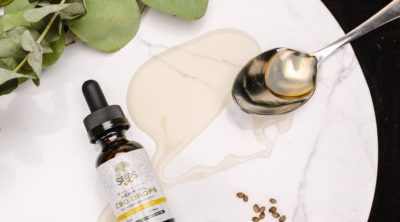
Cerumen or earwax should not be removed by using cotton ear buds, ear swabs, fingers or any other sharp devices, when excessive wax clogs the ear canal. It is important to use oil softening or irrigation technique to remove the earwax.
Cerumen is the medical term referring to earwax and is a cream-yellowish, waxy substance produced by the glands of the ear canal. Oft earwax is looked upon with disdain and considered a disgusting substance in the ear. However, on the contrary, earwax is very important for our overall health and well-being. It’s job is to clean, moisten and protect the ear canal from attack of bacteria and fungi. The body produce small amounts of wax needed to protect the canal and eardrum. However, at times, the production of earwax can be abnormally high, thereby conducing to blockage, pain, itchiness and inability to hear. One should consider cerumen removal only when one experiences pain in the ear or constant blockage, caused by excess production of earwax in the ear canal.
Importance of Removing Cerumen
On a general note, cerumen is not to be removed. Only when it is formed in excess, should it be removed. This is because excess wax in the ear canal can result in clogging, which thereby reduces one’s hearing capacity. Excess wax can also trap bacteria, thereby forming the perfect rostrum for onset of infection. Your audiologist will use an otoscope to examine the amount of wax collected in your ear canal and will treat you accordingly.
Cerumen Removal Techniques
One needs to be really careful while selecting cerumen removal tools for earwax removal. The doctor may use the irrigation technique to flush out the earwax. They take a straight tip syringe, filled with hydrogen peroxide and warm water and inject it into the ear canal. This solution enters the ear canal and softens the earwax. The wax gets flushed out and leaves the person relieved at the end. However, this technique should not be carried out on oneself. It is dangerous as the eardrum can get ruptured. Moreover, hydrogen peroxide is not good for sensitive ear canals.
The other cerumen removal techniques are wire loop technique and vacuum technique. In the wire loop technique, under the light of a powerful headlamp, as wire loop is used to gently pull out the extra wax. Vacuuming the ear with light suction is also another technique to remove the wax. Vacuuming has been used to clear wax, however, it is not recommended because several people have complained that after several years of suctioning their ears have stopped producing wax properly. Several commercial cerumen removal products are also available that are used to remove earwax.
Home Remedies
Home remedies should be tried out only if one has a healthy eardrum. One of the home remedies for cerumen removal is paraffin oil. Take 2-3 spoons of paraffin oil and warm it over a candle till it warms up. Take an eye dropper and suction up the oil into it. Drop a few drops of this oil into the ear and lie motionless for the next 5-10 minutes. The oil would have softened the wax slightly, thus, get up and empty the oil into the sink. Continue this procedure for the following week, by the end of which the earwax will dissolve completely. Instead of paraffin oil, you can also use baby oil or olive oil.
Refrain from using cotton ear buds, hair pins, keys or fingers to remove earwax. This will not only push the earwax deeper into the ear canal, but can also injure the eardrum and conduce to irreparable damage. Moreover, if you have a medical history of ear problems, refrain from trying out any cerumen removal remedies at home. Please consult a doctor, as treating the problem on your own can even cause irreparable damage to your ear. The ear is a sensitive organ and it’s our duty to treat it with utmost care.


